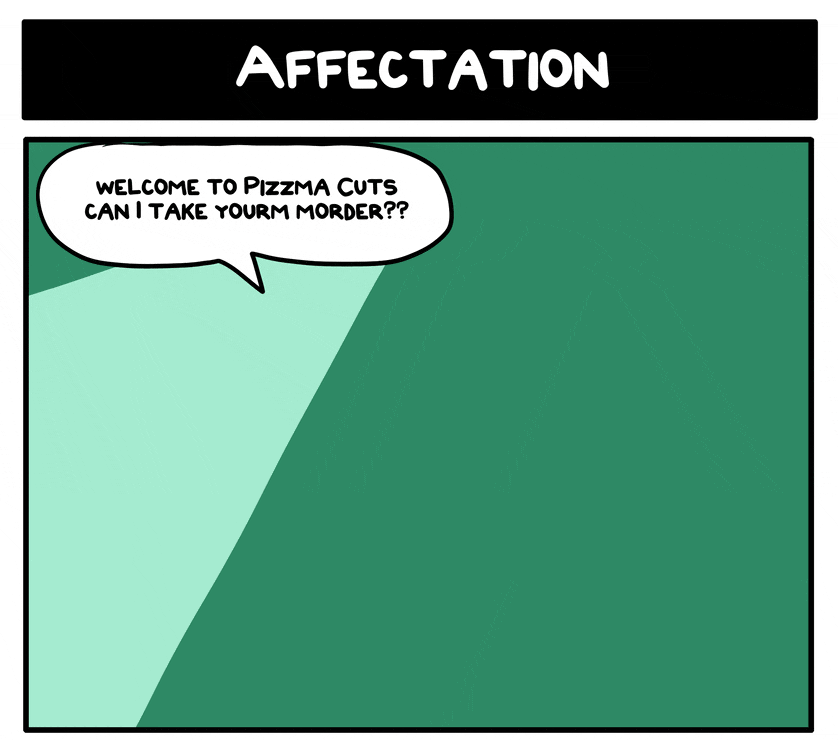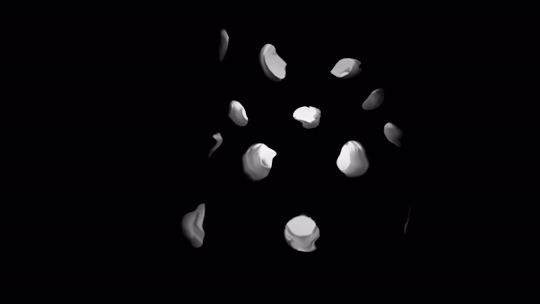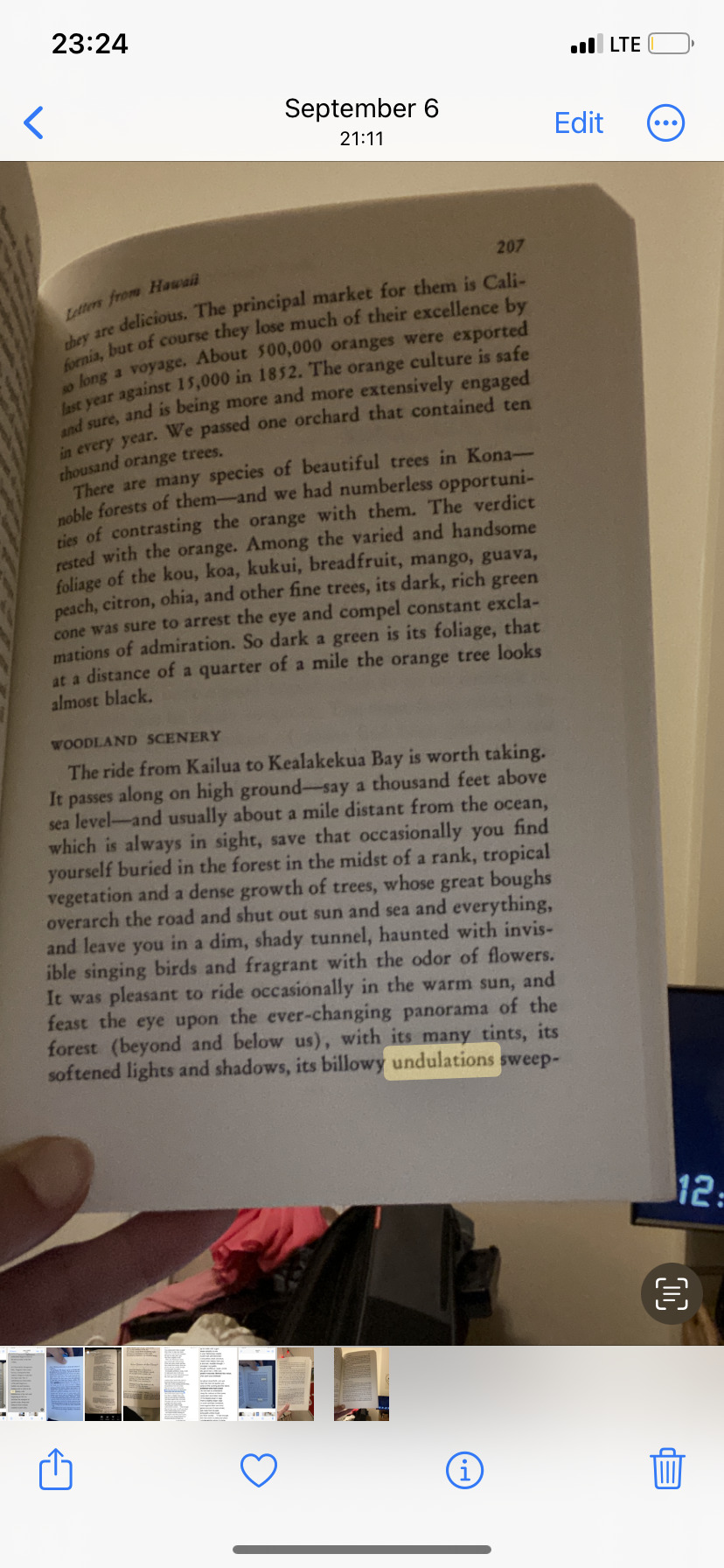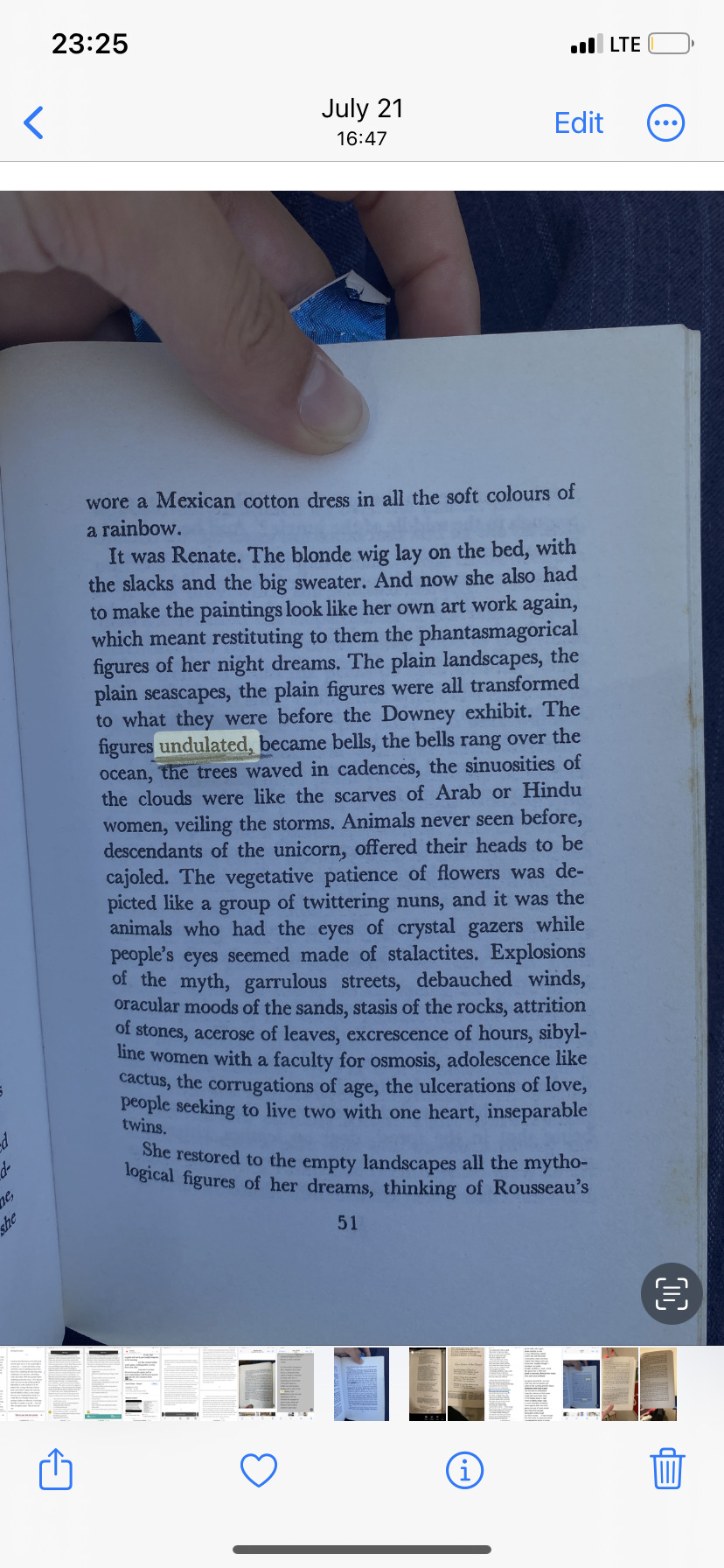#Undulation
Explore tagged Tumblr posts
Text



256 notes
·
View notes
Text

5 notes
·
View notes
Text
youtube
There are many different types of stages upon which your butt can be handed to you, such as the Great Wall's stairs, a moving raft, and a sloped roof. You'd better make use of the new Dodge button if you don't want this to happen.
~R
#fighting games#SEGA#3D#SEGA AM2#Virtua Fighter#FGC#Virtua Fighter 3#Game Over#undulation#Virtua Fighter 3tb#Sega Dreamcast#fighting game community#VF3tb#arcade games#Youtube
4 notes
·
View notes
Text
A field's value can jitter around the value zero but it can't be uniformly zero throughout a region for more than a brief moment.³
3. Actually, the mathematically inclined reader should note that the uncertainty principle dictates that energy fluctuations are inversely proportional to the time resolution of our measurements, so the finer the time resolution with which we examine a field's energy, the more wildly the field will undulate.
"The Fabric of the Cosmos" - Brian Greene
#book quotes#the fabric of the cosmos#brian greene#nonfiction#field#jitter#zero#uniformity#uncertainty principle#fluctuations#undulation#time
2 notes
·
View notes
Video
Got Pooled Again by Pekka Nikrus Via Flickr: In album Multiexposures
#monochrome#reflection#water#undulation#multiexposure#multiple exposure#triple exposure#pni3xp#kiasma#museum of contemporary art#nykytaiteen museo#museum för samtidskonst#helsinki#helsingfors#finland#suomi#pni#pekka nikrus#skrubu#flickr
3 notes
·
View notes
Text
Snake Locomotion
Snakes use at least five unique modes of terrestrial locomotion. The kind of locomotion a snake uses in any particular instance depends on several factors such as the kind of surface it is crawling on and its speed. In fact, an individual snake can use most or all of the five modes, and can even use two modes in different parts of the body. Below are descriptions of the various modes of snake locomotion and a brief bibliography.
But first, the locomotor mode of most limbless lizards is Simple Undulation. Simple undulation is characterized by waves of lateral bending being propagated along the body from head to tail. The bends push laterally against surface objects, but do not deform locally around them, and usually slip out of contact quickly; in this way, simple undulation differs from the more complex Lateral Undulation of snakes (see below). Most elongate and limbless lizards use simple undulation when crawling on the surface of the ground; however, a few species use the more complex mode of lateral undulation that snakes use.

Lateral Undulation is the common serpentine locomotion of snakes. In lateral undulation, as in simple undulation, waves of lateral bending are propagated along the body from head to tail. But lateral undulation is unique in that whenever a bend contacts a surface object, such as a rock or stick, it exerts force against it and deforms locally around it. Whenever a snake pushes against multiple objects simultaneously, the lateral force vectors cancel each other, leaving a resultant vector that propels the snake forward; postural adjustment around each object gives the snake even finer control over the direction of force exertion. Force exertion against each object is inversely proportional to the number of objects being pushed against simultaneously by the snake, but total force is roughly constant for a given speed and substrate. In lateral undulation, the large dorsal muscles are activated sequentially along the body. The muscles are active unilaterally in each bend, from the convex part of a bend forward to the straight or concave part of the bend. As the snake progresses, each point along its body follows along the path established by the head and neck, like the cars of a train following the engine as it moves along the track (although the propulsive mechanism is very different); thus, sliding friction is a critical component of lateral undulation. The local adjustment of curvature around each point of contact with an external object indicates a high degree of sensory-motor control, unique to snakes and a few species of limbless lizards.

Sidewinding is used by many snakes crawling on smooth or slippery surfaces, but is best known in the sidewinder rattlesnake (Crotalus cerastes) and a few desert vipers of Africa and Asia. Sidewinding is similar to lateral undulation in the pattern of bending, but differs in three critical ways: First, each point along the body is sequentially placed in static (rather than sliding) friction with the substrate. Second, segments of the body are lifted off the ground between the regions in static contact with the ground. Thus, the body sort of rolls along the ground from neck to tail, forming a characteristic track (that is proportional to body length) in sand; after being lifted off the ground and set down again a short distance away, the front part of the body begins a new track while the rear part of the body completes the old track. Third, because of the static contact and lifting of the body, the snake travels roughly diagonally relative to the tracks it forms on the ground. Muscle activity during sidewinding is similar to that in lateral undulation except that some muscles are also active bilaterally in the regions of trunk lifting.

Concertina locomotion involves alternately pulling up the body into bends and then straightening out the body forward from the bends. The front part of the body then comes to rest on the surface and the back part of the body is pulled up into bends again, and so forth. The bends may push laterally against the sides of a tunnel or vertically against the ground to keep the body from slipping. Thus, static friction is critical to concertina locomotion. Concertina locomotion is used in crawling through tunnels or narrow passages and in climbing. In concertina locomotion, blocks of muscles are activated simultaneously, and unilaterally, in regions of bending and of static contact with the sides of a tunnel.

Rectilinear locomotion is movement in a straight line. It is used mainly by large snakes such as large vipers, boas, and pythons. In rectilinear locomotion, the belly scales are alternately lifted slightly from the ground and pulled forward, and then pulled downward and backward. But because the scales "stick" against the ground, the body is actually pulled forward over them. Once the body has moved far enough forward to stretch the scales, the cycle repeats. This cycle occurs simultaneously at several points along the body. Static friction is the dominant type of friction involved in rectilinear locomotion. Unlike lateral undulation and sidewinding, which involve unilateral muscle activity that alternates from one side of the body to the other, rectilinear locomotion involves bilateral activity of the muscles that connect the skin to the skeleton. One set of these muscles lifts the belly scales up and pulls them forward and another set of muscles pulls the them downward and backward. Blog owner @scoriarose's addition: Snakes have ribs with ball joints which allows them to function similar to legs, and are also relevant to this motion. For more information please see this: https://www.tumblr.com/scoriarose/756537189019648000


Slide-pushing involves vigorous undulations of the body that slide widely over the surface. Slide-pushing is used when a snake on a smooth surface is startled and tries to escape quickly, but slips over the surface. In slide-pushing, irregular bends of the body and tail press vertically on the surface at different points; although the body slips on the surface, it pushes down with enough force to move the center of mass in a quasi-regular, often step-like, pattern. Thus the snake progresses irregularly by slipping along the ground. Sliding friction is most important in slide-pushing, although there may be occasional moments of static contact. The patterns of muscle activity during slide-pushing are unknown.
Original article written by Brad Moon, 2001 References Below Cut
Original source: https://userweb.ucs.louisiana.edu/~brm2286/locomotn.htm
Bennet, S., T. McConnell, and S. L. Trubatch. 1974. Quantitative analysis of the speed of snakes as a function of peg spacing. Journal of Experimental Biology 60, 161-165.
Bogert, Charles. 1947. Rectilinear locomotion in snakes. Copeia 1947:253-254.
Brain, C. K. 1960. Observations on the locomotion of the South West African adder, Bitis peringueyi (Boulenger), with speculations on the origin of sidewinding. Annals of the Travsvaal Museum. 24:19-24.
Cowles, Raymond B. 1956. Sidewinding in snakes. Copeia 1956(4):211-214.
Gans, Carl. 1962. Terrestrial locomotion without limbs. American Zoologist 2:167-182.
Gans, Carl. 1975. Tetrapod limblessness: Evolution and functional corollaries. American Zoologist 15:455-467.
Gans, Carl. 1985. Motor coordination factors in the transition from tetrapody to limblessness in lower vertebrates. In: (B. M. H. Bush and F. Clarac, eds.), Coordination of motor behaviour. Soc. Exp. Biol., Sem. Ser. 24:183-200.
Gans, Carl. 1984. Slide-pushing: a transitional locomotor method of elongate squamates. Symposium of the Zoological Society of London 52:12-26.
Gans, Carl. 1986. Locomotion of limbless vertebrates: pattern and evolution. Herpetologica. 42(1):33-46.
Gans, Carl. 1994. Approaches to the evolution of limbless locomotion. Cuadernos de Herpetolog'a. 8, 12-17.
Gans, Carl. and H. L. Kim. 1992. Kinematic description of the sidewinding locomotion of four vipers. Israel Journal of Zoology 38:9-23.
Gans, Carl. and H. Mendelssohn. 1972. Sidewinding and jumping progression of vipers. In: (A. de Vries and E. Kochva, eds.), Toxins of animal and plant origin, pp. 17-38. Gordon and Breach Science Publ., London.
Gasc, Jean-Pierre, D. Cattaert, C. Chasserat, and F. Clarac. 1989. Propulsive action of a snake pushing against a single site: its combined analysis. Journal of Morphology 201:315-329.
Gray, James. 1946. The mechanism of locomotion in snakes. Journal of Experimental Biology 23(2):101-120.
Gray, James. 1953. Undulatory propulsion. Quarterly Journal of Microscopical Science 94:551-578.
Gray, James and H. W. Lissmann. 1950. The kinetics of locomotion of the grass-snake. Journal of Experimental Biology 26:354-367.
Jayne, Bruce C. 1985. Swimming in constricting (Elaphe g. guttata) and non-constricting (Nerodia fasciata pictiventris) colubrid snakes. Copeia 1985:195-208.
Jayne, Bruce C. 1986. Kinematics of terrestrial snake locomotion. Copeia 1986(4):915-927.
Jayne, Bruce C. 1988a. Muscular mechanisms of snake locomotion: an electromyographic study of lateral undulation of the Florida banded water snake (Nerodia fasciata) and the yellow rat snake (Elaphe obsoleta). Journal of Morphology 197:159-181.
Jayne, Bruce C. 1988b. Muscular mechanisms of snake locomotion: an electromyographic study of sidewinding and concertina modes of Crotalus cerastes, Nerodia fasciata, and Elaphe Obsoleta. Journal of Experimental Biology 140, 1-33.
Jayne, Bruce C. and Albert F. Bennett. 1989. tail morphology and snake locomotion. Journal of Experimental Zoology 252:126-133.
Lissmann, H. W. 1949. Rectilinear locomotion in a snake (Boa occidentalis). Journal of Experimental Biology 26:368-379.
Moon, Brad R. and Carl Gans. 1998. Kinematics, muscular activity, and propulsion in gopher snakes. Journal of Experimental Biology 201(19):2669-2684.
Mosauer, Walter. 1930. Note on sidewinding locomotion. American Naturalist 64:179.
Mosauer, Walter. 1932. On the locomotion of snakes. Science 76:583-585.
Mosauer, Walter. 1932. Über die Ortsbewegung der Schlangen. Eine Kritik und Ergänzung der Arbeit Wiedemann's. Zoologische Jahrbucher Abteilung fur Allgemeine Zoologie und Physiologie der tiere 52, 191-215.
Mosauer, Walter. 1935. How fast can snakes travel? Copeia 1935:6-9.
Ruben, John A. 1977. Morphological correlates of predatory modes in the coachwhip (Masticophis flagellum) and rosy boa (Lichanura roseofusca). Herpetologica 33:1-6.
Secor, Stephen M., Bruce C. Jayne, and Albert F. Bennett. 1992. Locomotor performance and energetic cost of sidewinding by the snake Crotalus cerastes. Journal of Experimental Biology 163:1-14.
Walton, Michael, Bruce C. Jayne, and Albert F. Bennett. 1990. The energetic cost of limbless locomotion. Science 249:524-527.
Wiedemann, E. 1932. Zur Ortsbewegung der Schlangen und Schleichen. Zoologische Jahrbucher Abteilung fur Allgemeine Zoologie und Physiologie der tiere 50:557-596.
3 notes
·
View notes
Text

moving spots of light.
Created using an animation app on my iphone.
#light#spots#glowing#distorted#animation#undulation#undulating#animated#animated-video#distortion#abstract#gif
5 notes
·
View notes
Note
guayaba’s old releases are still under guayaba on bandcamp, newest solo stuff is as ex-florist, and they’re the vocalist of the metal band undulation ♥️
thank you for this info, i love them
20 notes
·
View notes
Text
These, glittering in the sunshine, might be compared to diverging rays of light; they were not, however, straight, but in undulations like films of silk blown by the wind.
"Journal of Researches into the Natural History and Geology of the Countries Visited During the Voyage of H.M.S. Beagle Round the World, 1832-36" - Charles Darwin
#book quote#the voyage of the beagle#charles darwin#nonfiction#spider#spinners#spider web#spider silk#glittering#sunshine#sunlight#diverging#light rays#undulation#windblown
3 notes
·
View notes
Photo
undulation noun
a continuous up and down shape or movement, like waves on the sea:
The fields rise and fall in gentle undulations.

49K notes
·
View notes
Text
It’s windier out than this vid of the water suggests
1 note
·
View note
Text
0 notes
Text
*hip checks u*
#i am ESTABLISHING. an extremely MILD BOUNDARY.#baby my hips don't lie but they do call the referee in to establish precedence#baby i am NOT and will NEVER admit that my hips have committed perjury#...but i am willing to entertain the concept that my hips are morally flexible#capable of ethical undulations even#Platonic Twerking. if you will
4K notes
·
View notes
Text
The lowermost level of the figure shows the quantum undulations of space on familiar scales and, as you can see, there's nothing to see – the undulations are unobservably small, so space appears calm and flat.

"The Fabric of the Cosmos" - Brian Greene
#book quote#the fabric of the cosmos#brian greene#nonfiction#quantum physics#undulation#space#calm#flat
1 note
·
View note




